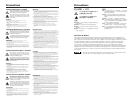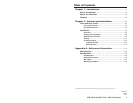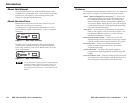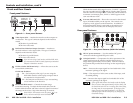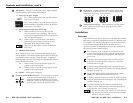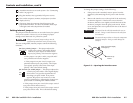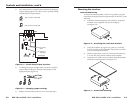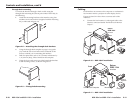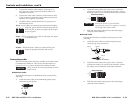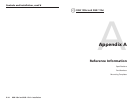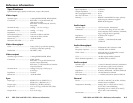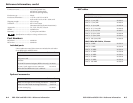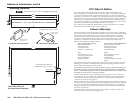
RGB 109xi and RGB 112xi • Introduction
Introduction
1-2
About this Manual
This manual documents two dedicated RGB interface units:
the RGB 109xi, and the RGB 112xi. Unless otherwise specified,
references to “the interface” in this manual pertain to the
features or operation of both interfaces.
About the Interfaces
Both dedicated interfaces have the same features, but each
works with a specific type of computer.
The RGB 109xi is a high-resolution, dedicated VGA/XGA/
SVGA/SXGA computer-video interface. It uses a 15-pin HD
connector.
RGB 109xi
BUFFERED LOCAL
MONITOR OUTPUT
H. SHIFT
INPUT
VGA INTERFACE WITH ADSP
ID PIN 4
ID PIN 11
Figure 1-1 — RGB 109xi interface
The RGB 112xi is a high-resolution, universal workstation
interface that is compatible with all workstations that use a
13W3 video connector, such as Sun, IBM PowerPC, SGI, and
NeXT workstations.
RGB 112xi
BUFFERED LOCAL
MONITOR OUTPUT
H. SHIFT
INPUT
13W3 INTERFACE WITH ADSP
Figure 1-2 — RGB 112xi interface
For each RGB 112xi, Extron provides a multi-frequency
termination adapter (MFTA) to be used if there is no
local monitor. The adapter is attached by a chain to
the interface, and an instruction card is attached to the
adapter.
RGB 109xi and RGB 112xi • Introduction
1-3
Features
Each interface includes the features listed below. See “Front and
Rear Panels” on page 2-2 for information about the controls.
ADSP
™
(Advanced Digital Sync Processing
™
) — Allows sync
processing operations, such as horizontal centering, to
occur without affecting the signal’s sync timing. This
allows horizontal centering to be applied to signals that
are output to digital display devices, such as LCD (liquid
crystal display) projectors, DLP (digital light processing)
projectors, and plasma displays.
Auto power — Turns on power to the interface automatically
when a video signal is received from the computer. You
can determine that the interface is on if the scan rate
indicator LCD displays a scan rate.
Buffered local monitor output — Allows you to view the
displayed image on a local monitor located up to 150 feet
from the interface without signal reflections or crosstalk.
Horizontal shift — Allows you to adjust the horizontal
placement of the image on the screen. Also called
“horizontal centering”.
Gain/Peak control — Increases video signal voltages to
compensate for signal degradation caused by long cable
lengths.
Scan rate indicator LCD — Displays the horizontal and vertical
sync frequencies of the computer, and the minimum and
maximum points of adjustments to horizontal shift.




